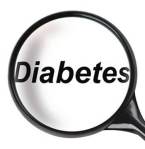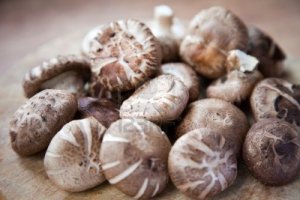 Diabetes is currently one of the most common chronic diseases in the United States, and there is a significant mortality rate associated with it.
Diabetes is currently one of the most common chronic diseases in the United States, and there is a significant mortality rate associated with it.
Although Chinese medicine cannot offer a cure for diabetes, we can, by using the modalities available to us, most certainly help to optimize the functionality of our patient’s bodies to function as close to normal as possible. This, in turn, enables our diabetic patients to experience a greater quality of life and to benefit greatly from an overall higher level of health.
Western Medical Perspective
In laymen’s terms, diabetes is a disease in which your blood glucose, or sugar levels are too high.
Glucose is a type of sugar that comes from the foods you eat. Insulin is the hormone that lowers the level of glucose in the blood and helps it get into your cells where it is used for energy production or stored for future use. Insulin is produced by the beta cells of the pancreas, an organ that is located behind the stomach.
There are two types of diabetes: Type 1 and Type 2.
In Type 1 diabetes, the body does not create enough insulin. With Type 2 diabetes (the more common of the two), the body does not make or use insulin well. In either case, the result is that the body’s blood glucose level rises.
Over time, an excess of glucose in the blood can lead to serious problems. Damage to the kidneys, eyes, and nerves are the most commonly known problems, but years of poorly controlled diabetes can lead to limb removal, heart disease, and even stroke. In fact, the risk of heart attack for diabetics is equal to that of someone who has already had a heart attack.
Oriental Medical Perspective
The complex of symptoms referred to in the West as diabetes has traditionally been known as xiao-ke by the Chinese. The term xiao-ke translates into English as either “wasting and thirsting” or “flowing away and thirst”… terms, which together refer to the excessive thirst, hunger, and urination that the diabetes patient typically experiences. The more modern Chinese term for the disease is tang-niao-bing, which translates as “sugar urine disease,” referring to the loss of fluids through urine and the excessive sweetness of that urine.
References to xiao-ke appear in the earliest Chinese medical texts, including the Huang Di Nei Jing (The Yellow Emperor’s Inner Classic), which is the first known medical text in Chinese history. The disease was originally described as resulting from long-term consumption of sweet, rich, and fatty foods… but according to today’s Chinese medical theory, the disease can be attributed to three main factors:
1. Improper diet (overconsumption of sweets, greasy/fatty foods, alcohol, and hot beverages)
2. Emotional disturbances (stress, anxiety, depression)
3. Constitutional Yin Deficiency (fatigue, weakness, exhaustion, pallor)
Acupuncture
Acupuncture can be used to reduce blood glucose levels and to normalize endocrine function.
Body acupuncture point selection can vary greatly based on individual case pattern diagnosis and treatment principles, but a typical treatment involves placement of needles for 10 ~ 30 minutes. The needles can be stimulated manually, using electrical stimulation, or by warming them using moxibustion burned on the end of the needles. Auricular (ear acupuncture) and body acupuncture can be used together or in conjunction.
Chinese Herbal Medicine
The use of Chinese herbal formulas in the treatment of xiao ke dates back at least 2,000 years. Formulas are prescribed on a case-by-case basis and are based on individual case pattern diagnosis and treatment principles that are determined by the patient’s predominant symptoms. This treatment based on pattern diagnosis is what makes this medicine holistic, safe, and effective.
Diet
Just as in Western medicine, diet plays an important role in the treatment of this illness in Chinese medicine. This is obvious just in knowing that one of the main causes of the disease is, in fact, improper diet.
The three key points to maintaining a healthy diet in relation to maintenance of this disease are:
1. Avoid foods that cause Stomach Heat (hot, spicy, acrid, greasy, fatty, and fried foods).
2. Avoid foods that damage the Spleen (raw, uncooked, chilled foods, and refined wheat products, sugars and sweets).
3. Eat foods that build yin and blood (tonifying, mildly cooling foods that moisten and nourish).
Overall, a clear, bland diet, high in complex carbohydrates such as unrefined grains and lightly cooked vegetables is the best diet to be adhered to. However, this is not completely a vegetarian diet, and most people should eat 1 ~ 2 ounces of meat 2 ~ 4 times per week.
Patients should avoid overeating.
Exercise
Exercise is an important therapy for those suffering with this disease. Exercise moves qi and blood, and since there is almost always some component of qi stagnation and blood stagnation associated with these cases, the patient can only benefit from it. Any aerobic exercise that raises the heartbeat at least 80% above normal resting rate and keeps it there for at least 20 minutes is best.
Tui Na
Tui Na Chinese medical massage can be used in conjunction with acupuncture treatment or as an alternative to it when dealing with patients who have an aversion to needles.
Tui Na practitioners use hand manipulation techniques to stimulate the meridians and acupuncture points, and work directly with the energy of the body at a very deep level.
The Tui Na practitioner is able through his/her touch to gauge the distribution of energy in the body and is able to affect and direct and affect its flow.
Qigong
By teaching our patients a combination of qigong breathing, meditation, visualization, and movement techniques, practitioners of Chinese medicine offer them yet another means to treat and manage their condition. This ancient Chinese practice has long been used by practitioners to promote health, fitness, and general well being.
According to the teachings of Chinese medicine, conditions such as diabetes are caused by energetic imbalances within the body. Qigong helps to realign your body to your environment and can be used to restore such energetic imbalances, thereby bringing the body back into a balanced and more healthful state.
Patients seen by appointment only.
Acupuncture in Pt Pleasant, NJ


 Diabetes is currently one of the most common chronic diseases in the United States, and there is a significant mortality rate associated with it.
Diabetes is currently one of the most common chronic diseases in the United States, and there is a significant mortality rate associated with it.
